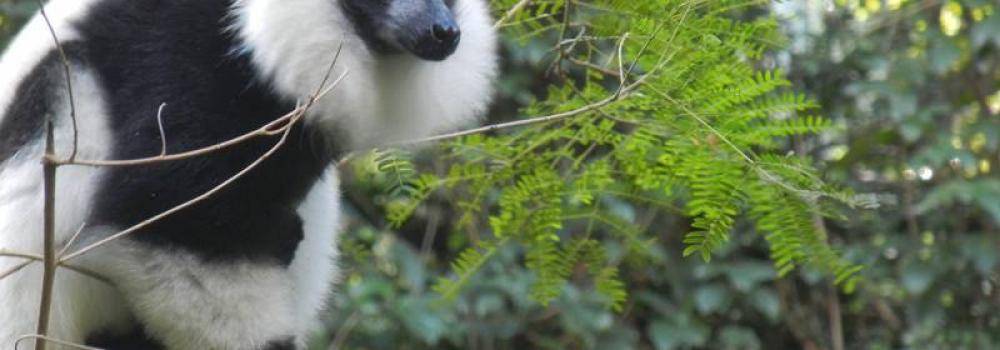
Overview
With 80% of the population depending on agriculture to sustain their livelihoods and 68% living below the poverty line, and the added pressure of habitat destruction and bush-meat consumption, balancing conservation and sustainable development in Madagascar can be challenging. Madagascar has a significant number of endemic animal species, such as lemurs, as well as diverse ecosystems including rainforests, dry spiny forests, and reefs. To protect these, the government of Madagascar has signed several environmental agreements, including in the areas of biodiversity, climate change, wetlands, marine life conservation, desertification, and endangered species. However, as one of the poorest countries in the world by GDP, Madagascar still faces budget limitations for social services such as education.
Policy & Practice
National Legislation
Although conservation was built into the Madagascar Action Plan, there is currently no national legislation on environmental education.
EE in K-12 Education
In their research project titled, Description and evaluation of an environmental education program in Madagascar, Angiolillo, Sangodkar, West, and Wyman (2012) stated that conservation was not included in the national curriculum in 2000. Nonetheless, there is some infusion of the importance of soil and water into the science curriculum.
Professional Development
Non-governmental organizations (NGOs) such as the Madagascar Fauna and Flora Group (MFG) provide professional development through teacher training, with a focus on environmental education topics and excursions to natural areas.
Leadership
EE in the National Government
The budget of the Malagasy government was impacted in the late 1980s by World Bank-imposed structural adjustments, which resulted in teachers’ salaries being cut in half. The political and economic situation seemed to improve by 2002, when conservation was even built into the new Madagascar Action Plan. Unfortunately, the political crisis of 2009 stalled and reversed a number of initiatives, including in EE. Despite this, NGOs in Madagascar still facilitate a wide variety of EE initiatives, as it is an important conservation strategy to address threats from the deeply ingrained cultural practice of tavy (slash and burn agriculture), population pressures, and high levels of poverty.
National EE Campaigns and Funding
Although Madagascar does not have a national association for EE, there are a number of NGOs implementing EE programs across the island.
First, the Madagascar Fauna and Flora Group (MFG) protects the biodiversity of eastern Madagascar through conservation, research, education, and capacity building, working as a consortium of zoos, aquariums, botanical gardens and related institutions around the world. MFG's objectives include to 1) allow people to acquire knowledge about the complexity of the local environment; 2) allow people to acquire skills to face today's environmental issues; and 3) encourage people to be responsible and to develop favorable attitudes towards themselves, their society, and their environment. MFG targets the areas around Ivoloina and the Natural Reserve of Betampona, as well as working at the national and international level. The MFG's EE programs include formal, non-formal and informal EE. Their formal EE program includes Saturday school, teacher training, camping, and student and teacher excursion to natural areas. Their non-formal programming includes high school teacher training, while informal includes radio broadcasts and an exhibition center.
Second, Impact Madagascar works to provide children and youth with the knowledge and skills to protect and conserve their natural environment. Their mission is also to empower the next generation to protect their environment, by instilling these values from a young age. Impact Madagascar support ecological research (e.g. developing effective and sustainable conservation strategies with a focus on species or habitats which are threatened with extinction), education infrastructure (e.g. building primary schools in rural areas and provide furniture and educational materials such as text books and exercise books), sustainable development (e.g. establishing local management committees for local livelihood development), and conservation education and recycling.
Third, the local NGO Madagascar Wildlife Conservation created a comic book to educate children about endangered species and habitat preservation. An evaluation of the effect of the comic book on students’ understanding of conservation issues suggested that the comic book had a significant effect.
Last, the Valbio Center Ranomafana focuses on protecting Madagascar’s biologically diverse ecosystems through conservation science and initiatives that directly benefit local people. The Ranomafana Center has a long connection of partnering with and empowering local people that live adjacent to Ranomafana National Park by local people with knowledge of Madagascar's ecological diversity. In this regard, the Conservation Education group leads outreach and public awareness programs that sensitize on the diverse biodiversity of Madagascar. For example, the reforestation program teaches about the value of trees, animals, clean water and soil erosion. The Center has two outreach groups (Conservation and Reforestation) that focuses on direct relationships between people and the forest, while the third group (Health and Hygiene) concentrates on health and wellbeing.